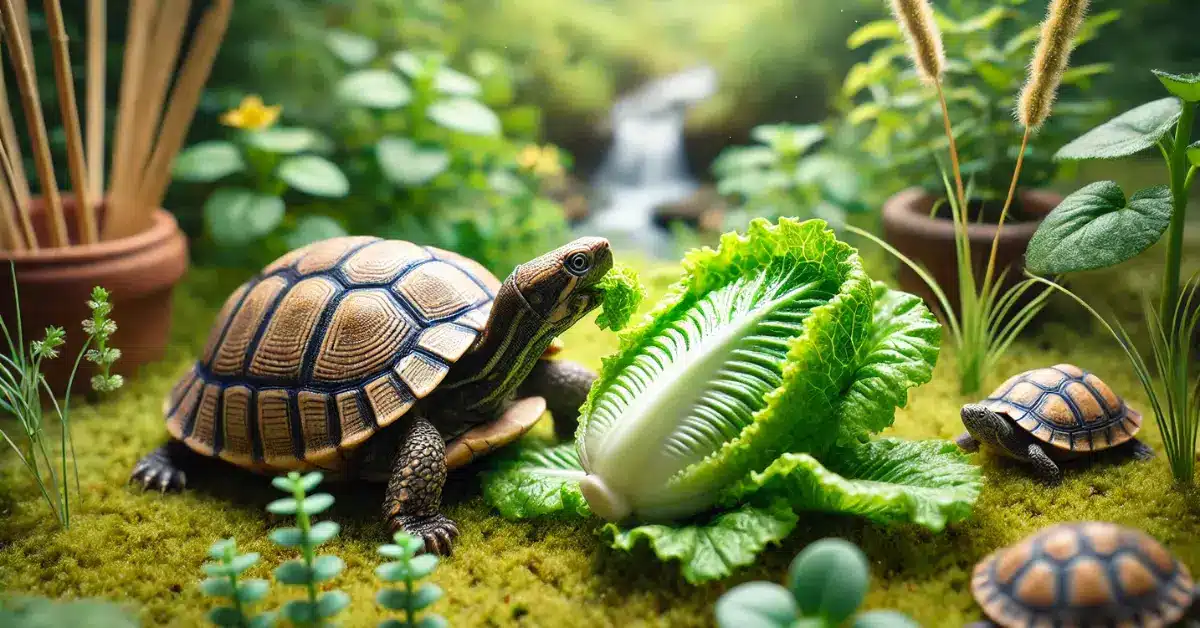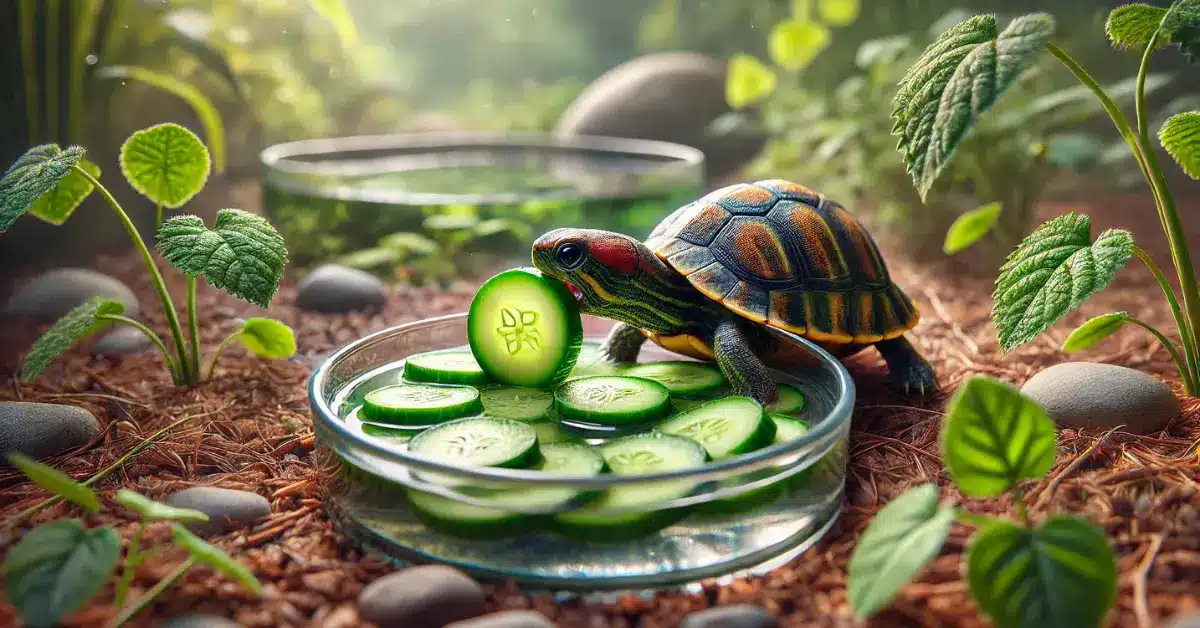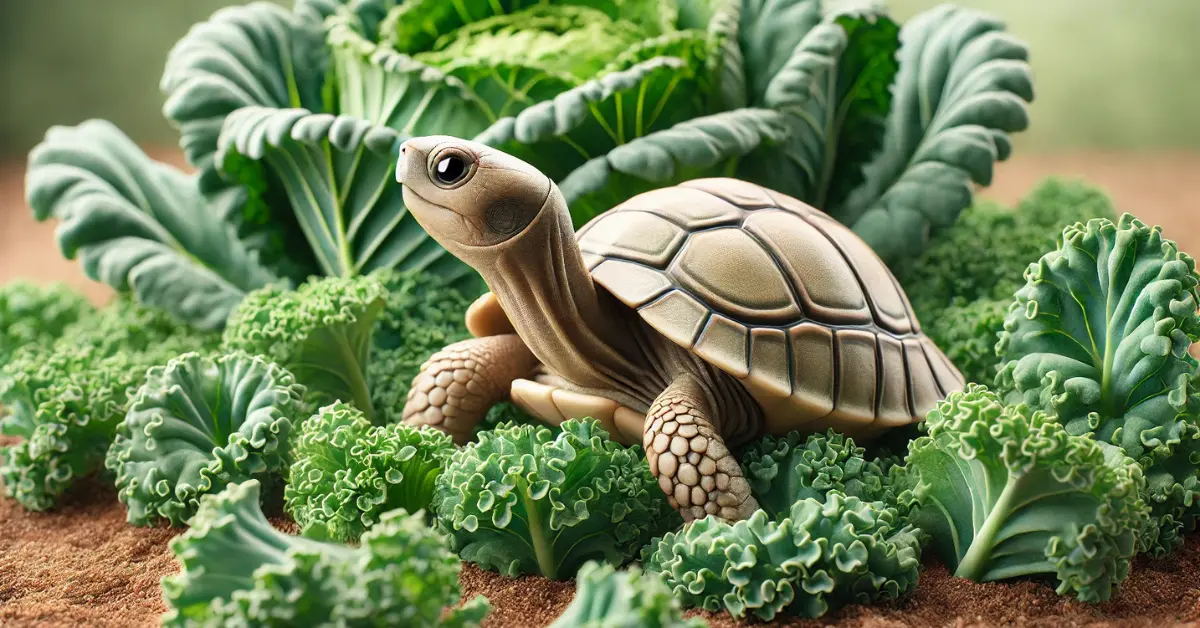Have you ever asked yourself, Do Turtles Have Emotions? At theturtles.info, we’re going to explore all about turtles and how they might feel. From their smart brains to their everyday actions, join us as we discover if turtles can feel happy, scared, or even make friends just like us!
Table of Contents
ToggleThe Debate: Can Turtles Feel?
Historical Perspectives on Reptile Emotions
In the past, most people thought reptiles such as turtles just followed their instincts and didn’t really feel emotions like mammals or birds do. Early scientists didn’t think these cold-blooded animals could feel anything like we do.
Current Scientific Views on Turtle Cognition
Things are changing now. With new studies and better science, we’ve learned that turtles can do things that might require some level of feelings. For instance, turtles often choose to be in places or with other turtles they like better, showing they remember things and might even have likes and dislikes.
Challenges in Studying Turtle Emotions
It’s really hard to figure out if turtles have emotions because they don’t show their feelings like dogs or cats do. Researchers have to watch turtles very closely and for a long time to guess what might be going on in their minds.
Understanding Turtle Behavior
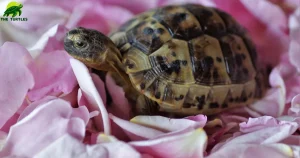
Observable Turtle Actions and Reactions
Even though turtles aren’t as expressive as some animals, they still show us how they feel by what they do. For example, when a turtle pulls into its shell, it might be scared. But if it stretches its head out, it could be curious about something. Watching these actions helps us understand how turtles react to things around them.
Interpreting Turtle Body Language
To figure out what turtles might be feeling, we can look at their body language. If a turtle is lying in the sun with its legs spread out, it’s probably feeling relaxed and happy. But if it’s hiding tightly in its shell, it might be scared or not feeling safe.
The Difference Between Instinct and Emotion
It’s good to know when turtles do things because of instinct or because they have feelings. Instincts are like automatic programs that make turtles do certain things without thinking. Emotions, however, are feelings that can change depending on what’s happening to them.
Signs of Potential Turtle Emotions
Stress and Fear Responses
If a turtle is trying to hide or escape, it might be feeling stressed or scared. These signs are important because they tell us the turtle is not happy with what’s happening around it.
Indicators of Contentment or Pleasure
A happy turtle might eat more or hang out in parts of its home where it feels most comfortable. Noticing these small actions can show us when a turtle is feeling good.
Aggressive or Territorial Behaviors
Sometimes turtles act tough or guard their space by snapping at others or blocking a way to their favorite spot. These actions might mean that turtles feel more than just basic instincts—they could be feeling protective or want to keep their space safe.
Bonding and Recognition Behaviors
Some turtles seem to know who their owners are or recognize other turtles. They might come to see you when you’re near their tank or follow you around. This kind of behavior means turtles might form friendships and could feel happy around friends.
Turtle Brain Structure
Anatomy of the Turtle Brain
Turtles have a simpler brain structure compared to many other animals. Their brains are small, but they’re packed with everything a turtle needs to live, find food, and stay safe. The turtle brain is organized differently from ours, focusing more on basic survival functions.
Comparison with Mammalian Brains
When we compare turtle brains to mammal brains, like ours or a dog’s, we see big differences. Mammals have larger and more complex brains that handle more advanced emotions and thoughts. Turtles have less of these areas, which means their feelings might be simpler but still important.
Areas Potentially Responsible for Emotions
Even though turtle brains are simple, they do have areas that might help them feel basic emotions. These parts of the brain could help turtles feel comfort when they’re warm and safe or stress when they’re in danger.
The Role of Hormones in Turtle Behavior
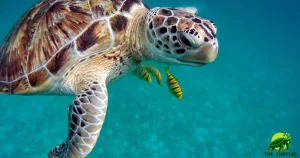
Stress Hormones in Turtles
Just like in people, turtles have hormones that react to stress. These hormones help turtles know when to hide or escape from danger. Understanding these hormones helps us see how turtles might feel scared or stressed.
Bonding Hormones and Social Behavior
Turtles might not be as social as some animals, but they do have hormones that could help them bond with others. These hormones might make turtles feel more comfortable around familiar turtles or even people they see a lot.
Seasonal Hormonal Changes and Their Effects
Turtles also experience changes in their hormones with the seasons, which can affect how they behave. For example, during mating season, their hormones might make them more active or aggressive. These changes show that turtles can have different feelings and behaviors depending on the time of year.
Turtle Cognition and Intelligence
Problem-Solving Abilities in Turtles
Did you know that turtles are pretty good at solving problems? They can learn how to find their way through mazes or figure out where food is hidden. This shows us that turtles can think about how to get around problems they come across, whether they’re looking for a snack or trying to find a cozy spot.
Memory and Learning Capabilities
Turtles have great memories, especially for important things like where to find food or a safe place to hide. They can remember these details for a very long time, which helps them survive better, whether they’re living in the wild or in a tank at home.
Social Cognition Among Turtles
Although we might think of turtles as liking to be alone, they actually know a bit about being social. For example, some turtles can recognize other turtles and might even have favorites that they like to hang out with. This means turtles can be quite smart about their social world.
Emotional Experiences in Different Turtle Species
Pet Turtles and Owner Bonds
Pet turtles can get pretty attached to their owners. They might swim up to the glass when they see you coming or seem happy when you’re around. This shows they can bond with people and react in ways that show they recognize and trust their owners.
Wild Turtle Social Structures
Wild turtles have different ways of dealing with each other. Some like to be alone, while others might gather together during certain times like when it’s time to mate. These behaviors help wild turtles manage their social lives in nature.
Differences Between Aquatic and Land Turtles
| Feature | Aquatic Turtles | Land Turtles |
| Social Behavior | Often like to be alone but will come together for basking or eating | Usually like to be alone but meet up when it’s mating season |
| Emotional Expression | Show feelings in quiet ways, like swimming away or hiding | Show feelings more clearly, like pulling into their shells or making hissing sounds |
| Environment Impact | Their mood and health depend a lot on water conditions | Their comfort and well-being depend a lot on land temperature and safety |
Positive Emotions of Turtles
Happy in Cozy Places
Turtles seem happiest when they are in a place they like. If their tank has warm spots for basking and clean water, they might move around more and look like they’re having a good time. This can show us that they are feeling comfortable and happy.
Friendly with People They Know
Turtles can also get excited when they see someone they know coming up to their tank. They might swim towards the glass or watch the person as they move around. This behavior shows that turtles recognize and feel safe with familiar faces, which might mean they are happy.
Negative Emotions of Turtles
Feeling Stressed or Unhappy
Turtles can feel stressed or unhappy too. If a turtle is always hiding or doesn’t want to eat, it could be a sign that it’s not feeling well. It’s important to watch for these changes because they help us know when a turtle needs help or a better environment.
Scared Reactions
When turtles are scared, they have special ways to show it. They might swim fast, hide in their shells, or even hiss. These are ways turtles try to protect themselves from things that scare them.
Read more: Do Turtles Have a Tongue?
Conclusion: Do Turtles Have Emotions?
As we end our journey on our blog at theturtles.info, let’s think back on our big question: “Do Turtles Have Emotions?” It turns out, turtles might not show their feelings as clearly as pets like dogs or cats, but they do have ways of showing us how they feel. They seem happy in a cozy spot and can get stressed or scared when things aren’t right.
We learned that turtles can feel better when they are in a nice place and might feel bad when they are not comfortable. This is important for anyone who takes care of a turtle because it helps us make sure they are happy and healthy.
Knowing that turtles can have feelings helps us see that they are interesting and complex. It teaches us to be kind and careful with all animals, understanding that they feel things too.
Thanks for visiting us at theturtles.info and learning about the feelings of turtles. What else would you like to learn about? Tell us, and let’s keep discovering more about these amazing animals together!
FAQs About Turtle Emotions
Can turtles feel happy?
Yes, turtles can show they are happy. When their home is just right, with warm spots and enough room, they move around more and seem to enjoy exploring.
Do turtles get sad?
Turtles might look sad or stressed if they stay in their shells a lot or don’t move around much. This could happen if they are not feeling well or if something in their home isn’t right.
How can I tell if my turtle is feeling scared?
If a turtle is scared, it might hide in its shell or try to run away. Some turtles might even hiss when they are frightened.
What signs of stress should I look out for in my turtle?
If your turtle stops eating, stays hidden, or scratches at its tank a lot, it might be stressed. Loud noises or a home that isn’t set up right can make them feel this way.
Can turtles recognize their owners?
Many people who have turtles think their pets know who they are. Turtles might come to the front of their tank or seem more active when their owner is around, which shows they might feel safe and happy to see them.
Do turtles like to be petted?
Some turtles might like a gentle touch on their head or shell, but others don’t like to be touched at all. It’s important to watch how your turtle reacts and go from there.
Can turtles feel lonely?
Even though turtles usually like being alone, they can still get stressed if they are by themselves for too long in a tank. Keeping their home interesting and letting them explore can help them feel better.
What can I do to make my turtle feel better?
Make sure your turtle’s home is just right, with clean water and the right temperature. Also, being calm and gentle with your turtle can help keep it happy.
How do changes in the seasons affect turtles?
When the seasons change, turtles might act differently. They could be more active or start looking for a mate when it’s warmer. In colder months, they might slow down or even sleep for a long time, which is normal for them.
Are water turtles more social than land turtles?
Both water and land turtles usually like to be on their own, but water turtles might see each other more, especially in places like ponds where they can all sit in the sun together. But, they still mostly keep to themselves.

